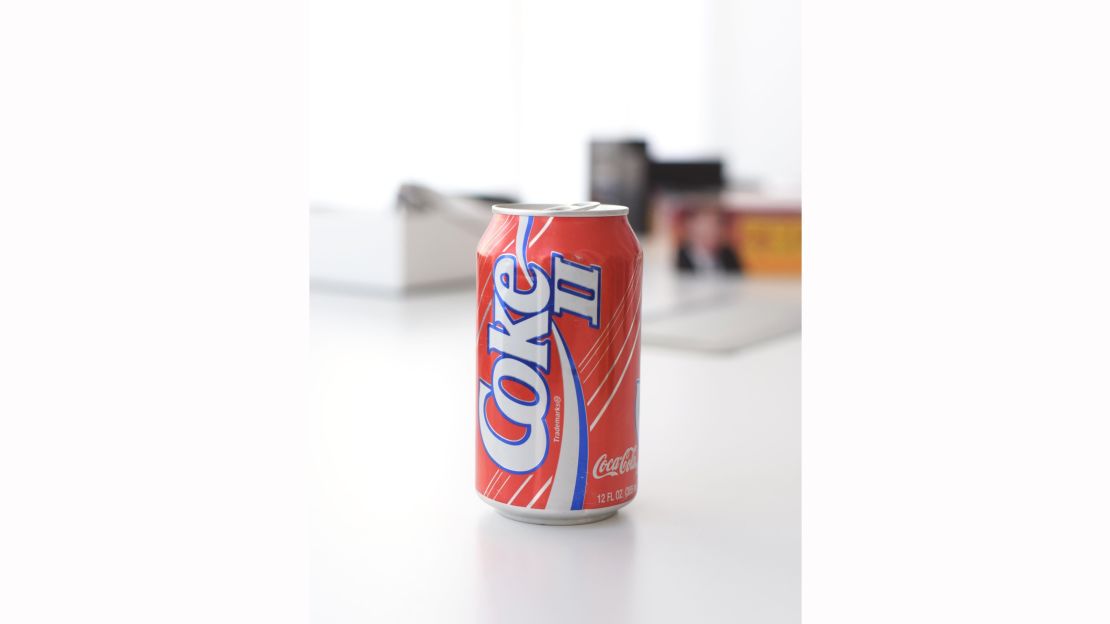History may be written by the victors, but we ignore the losers at our peril. At least, that’s what Sweden’s Museum of Failure will have us believe.
Displaying around 80 examples of failed products, businesses and ideas – from Coca Cola’s ill-fated “Coke II” to the infamous Sony Betamax – the newly opened museum celebrates modern history’s most notorious flops.

But as well as exhibiting long-forgotten failures (remember MiniDiscs?), founder Dr. Samuel West is on a mission to help us learn from our mistakes. West, a clinical and organizational psychologist who set up the museum after growing “fed up of success stories,” says understanding bad design can be more valuable than emulating good design.
“As a society, we glorify success and demonize failure,” he said over the phone. “Or we only talk about failures if they later led to success. But most of them don’t. They just end as failures – period.
“But they’re a fantastic opportunity to learn.”
Forgetting the user

Located in the Swedish town of Helsingborg, the Museum of Failure launched with a collection including Nintendo’s mid-90s attempt at VR, the Virtual Boy, and TwitterPeek, a $200 handheld device that offered access to Twitter – and only Twitter.
In addition to consumer technology, the museum houses poorly-received cars as well as edible products, like Heinz’s green ketchup. Displays are also dedicated to what the museum sees as poor examples of engineering (the Titanic) and planning (the Icelandic economic crisis).
The collection even features Donald Trump’s discontinued Monopoly-style board game, “Trump: The Game.”
“It was a badly-designed game,” West explained. “It was too complex, and no one could understand the instruction manual.
“It is also really boring. There’s nothing fun about it. And Donald Trump’s picture is on the money, the box and the game pieces – even the dice have a big ‘T’ rather than a six.”
The most common deficiency among offending products is a lack of user-centric design, West said.
“A large portion of the museum is dedicated to examples of great technology where (the designers) never stopped to ask, ‘What the hell are people going to do with this?’” he said. “They didn’t think about the usefulness for the end user. What are they going to do with the product? How does it add value their lives?”
Such oversights are often underpinned by corporate greed, said Tom Godfrey, organizer of The Shonkys, an annual consumer awareness awards that highlight the year’s worst products and services.
Read: Dinosaur skulls and mammoth tusks: Antique oddities target new collectors
“Companies’ (blind) pursuit of profit is clearly an issue,” he said.
Understanding failure
Rather than poking fun at bad design, West hopes that his museum can help erode the stigma of talking about mistakes.
“We need to accept failure if we want any kind of progress,” he said. “Organizations – and we as individuals – need to improve our ability to learn from it.”
One of the items on display – Apple’s “personal digital assistant,” Apple Newton – offers an example of how organizations can turn failure into success. Launched in 1993, the device’s handwriting recognition function failed to live up to expectations and Steve Jobs canceled the platform in 1998. Twelve years later, the company released the hugely successful iPad.
“By shutting it down, I freed up some good engineers who could work on new mobile devices,” Jobs would later say. “And eventually we got it right when we moved on to iPhones and the iPad.”
The museum’s sheer variety of items, many of which were acquired on eBay, strengthens West’s belief that poorly-designed products have little in common with one another.
Taking inspiration from a Leo Tolstoy quote (“Happy families are all alike; every unhappy family is unhappy in its own way”), West has created a slogan for his museum: “All successful innovations are alike; all failed innovations fail in their own interesting and spectacular way.”
But understanding failure is, it would seem, an inexact science.
For Henry Petroski, author of books like “Success through Failure: The Paradox of Design” and “To Engineer Is Human: The Role of Failure in Successful Design,” it is actually good products that share the fewest traits.
Read: Photographer exhibits ‘Magnificent Failures’
“Every successful endeavor is different – it has different circumstances and different players,” said Petroski, who is also professor of civil engineering at Duke University. “Failures are pretty definite indications of what not to do, or what can go wrong. They have very definitive lessons.
“But when something succeeds it’s less clear what the reasons are. Trying to replicate their success – as many people have done – is a very risky proposition.”
So it seems only right to ask West of his own greatest failure (aside from misspelling the word “museum” when buying his first domain name).
“I’m really good at generating ideas and fun, interesting projects,” he said. “But they end up dying because I don’t find a way to make money from them.”
So, it is in the spirit of his museum, West has addressed his shortcomings by making a pop-up exhibition available for private hire. A traveling collection of failures will then visit Los Angeles, New York, Shanghai and Tokyo in 2018 and 2019.












